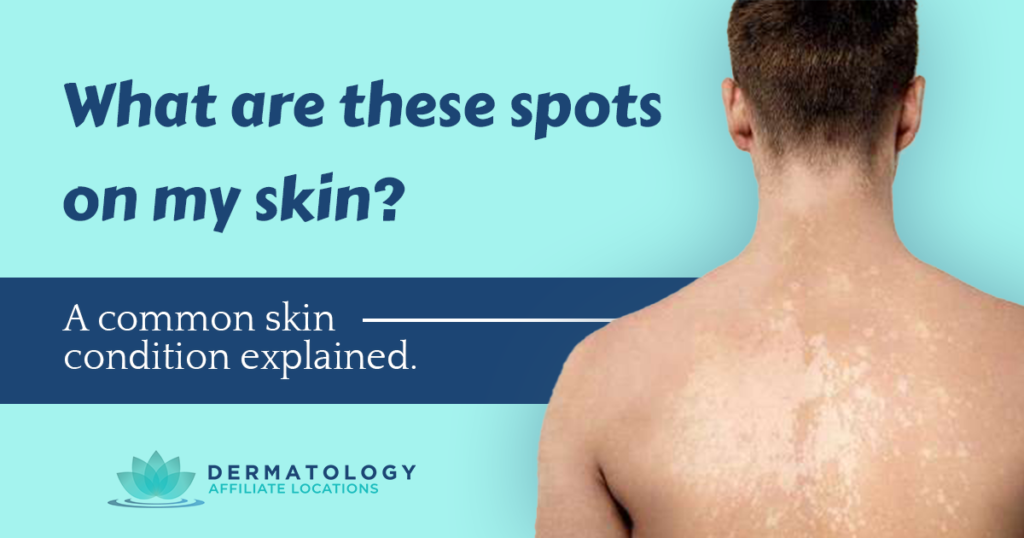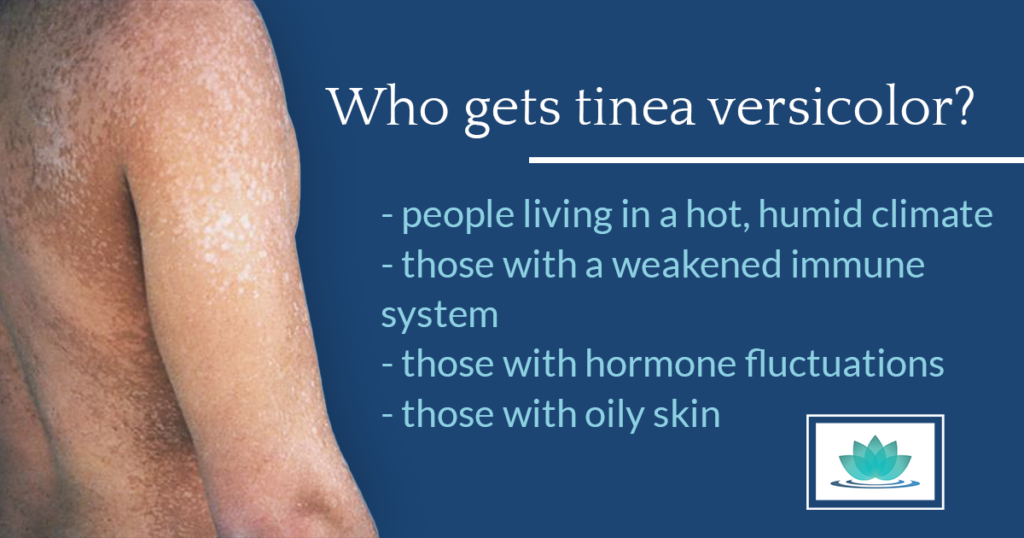What are these spots on my skin? Tinea Versicolor Explained
We’ve all experienced waking up to and then being forced to live with irritating skin conditions. When it comes to something like a weird alteration of skin color (usually white or salmon-colored), you can get a little more than panicked.

What are these spots on my skin?
Did you know that a yeast called Malassezia furfur is part of the normal flora that grows on our skin?
“Normally we are oblivious to its presence, however, for some patients it can proliferate and become a visible skin condition known as Tinea Versicolor.”
What is tinea versicolor?
Tinea versicolor is a fungal skin infection that affects the pigmentation of the skin, appearing as small discolored patches, often white or salmon-colored. They may have a powder-like scale and are usually contained to the upper body.
“The proliferation of the yeast can alter the function of the melanocytes, the pigment producing cells of the skin, causing a light discoloration to the affected areas.”
Other than the appearance, this condition is usually asymptomatic and easily diagnosed. Though not harmful, many people seek treatment to resolve the lesions due to their appearance.
Some people may have seasonal recurrent bouts of Tinea Versicolor and need intermittent treatment.
What triggers tinea versicolor?
There are a number of reasons some may develop this skin infection. Some factors that can trigger tinea versicolor include living in a hot, humid climate, having a weakened immune system, hormone fluctuations, and more.
“This benign condition favors individuals with oily skin and loves hot and humid environments.”
Who gets tinea versicolor?
Anyone can develop tinea versicolor, though it’s more common in young adults due to the frequent changes in hormones that can cause excessive oil production in the skin.
“More prevalent in teens and younger adults, Tinea Versicolor appears as scattered white or salmon colored patches on the skin.”

Can you get rid of tinea versicolor?
As a relatively common skin condition, tinea versicolor can be easily diagnosed and treated.
“Patients with limited areas that are affected may be sufficiently treated with topical antifungal agents such as selenium sulfide lotion and ketoconazole cream.”
However, some with recurring bouts of tinea versicolor may need further treatments in order to control the condition.
“Extensive or recurrent cases may necessitate treatment with oral medications such as fluconazole.”
How long does tinea versicolor take to go away?
Once effectively treated, it may take the skin several weeks to a few months to recover and resume its normal pigmentation.
If you notice that you have unusual light-colored or pink patches appearing on your skin, we encourage you to book an appointment with us so that we may help you with this very treatable common condition.

